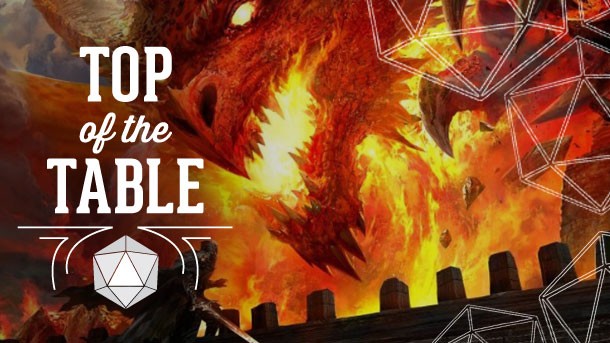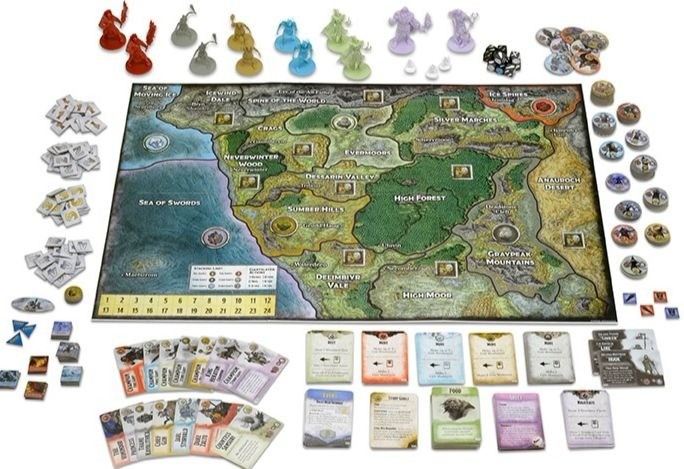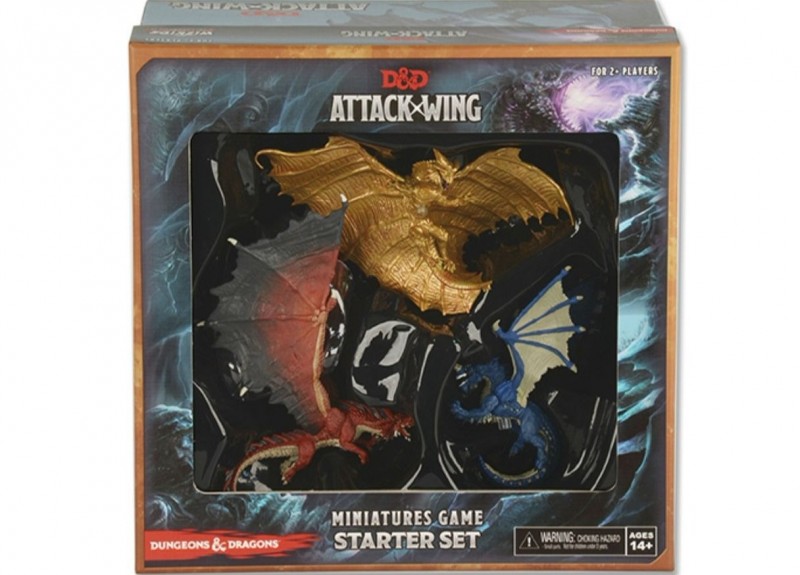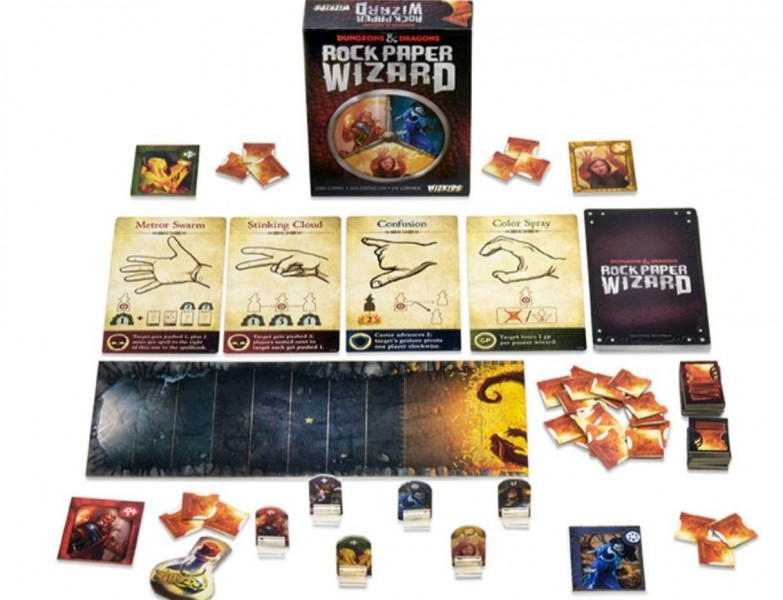Please support Game Informer. Print magazine subscriptions are less than $2 per issue
Top Of The Table – The Best Dungeons & Dragons Games (That Aren’t RPGs)

Since 1974, players have been gathering around tables to live out adventures in the many worlds of the Dungeons & Dragons role-playing game. Across multiple editions of the game, players and DMs craft emergent stories and live out the lives of heroes and their adventures. D&D spawned an entire medium of other tabletop role-playing games, but the franchise has also spread into other arenas of tabletop play.
This week, we’re taking a look at some of the great Dungeons & Dragons board, card, and miniatures games. Tapping into the campaign settings, concepts, and flavor of the brand, these games nonetheless aren’t role-playing games. Rather, they offer fascinating twists on the familiar fiction, sometimes emulating the feeling of a classic dungeon crawl but without the need for a DM, and at other times exploring entirely different genres of play, like worker placement or deck-building.
If you’re a big fan of Dungeons & Dragons, or even if you’ve always been intrigued with that universe but have never felt ready to confront the complexity of the role-playing game, these are releases worth checking out.

Lords of Waterdeep
Publisher: Wizards of the Coast
A personal favorite in my game collection, Lords of Waterdeep transports players to the most famous of D&D communities – the sprawling city of splendors known as Waterdeep. Players are the mysterious masked lords of the city, endlessly conniving against one another for control of the fantasy urban sprawl. Excellent worker placement mechanics demand players think carefully about where to devote resources, expressed as adventurer cubes of different colors that represent different D&D classes. Lords of Waterdeep is a deep and rewarding strategy game, but it also boasts a relatively short play session time; that’s a rare combo. Several years ago, I wrote a more extensive piece about the game, which you can check out for more info.

Dragonfire
Publisher: Catalyst Game Labs
Deck-building card games function on an intriguing loop; cards in your hand are played, which leads to new cards being shuffled into your deck, gradually growing the potential power at your disposal in an ever-expanding circle. That core principle is applied to Dragonfire, a fully cooperative card game that emulates the flow of a D&D campaign, but with a focus on tactical cooperation and card-suit matching rather than role-playing. Even so, the Dungeons & Dragons universe is fully on display, especially thanks to excellent artwork and graphic design on nearly every component in the game. Players have tremendous flexibility to shape their character, choosing unique race and class combos, and then building out a deck of cards. Leveling up improves your character’s potential, as do special magic item cards that can turn the tide of a fight. Dragonfire is a deep and complex deck-builder, and its interwoven cooperative elements and leveling might be overwhelming to newcomers to this style of card game. It’s also clearly designed to be played by the same group over many sessions; if you have a group that loves this style of card game, I highly recommend giving it a shot.

Assault of the Giants
Publisher: WizKids
Flipping the script on the classic D&D experience, Assault of the Giants puts three to six players in charge of competing clans of giants as they attempt to consolidate power and rise to new heights within the hierarchy of giant folk, often at the expense of small people like humans and elves that might get caught in the crossfire. Through some especially clever design work, every one of the playable races features different victory conditions (from reviving an ancient titan to eating the most halflings), and yet I’ve found the game to be exceptionally well balanced every time I’ve played. The strategic depth is significant, but event cards also do a great job of communicating an unfolding narrative. For experienced groups eager for a novel perspective on the Forgotten Realms D&D world, you can’t go wrong with this one. Read my complete review for more detail.

Betrayal at Baldur’s Gate
Publisher: Avalon Hill/Wizards of the Coast
Betrayal at House on the Hill is a perennial favorite for many gaming groups. That horror-themed semi-cooperative original sent you into a haunted mansion, with the full knowledge that one of the other players might be working against you the whole time. Betrayal at Baldur’s Gate is a spin-off that trades the horror theme for fantasy, and the modern-day visitors are transformed into hearty adventurers skulking through the dangers of Baldur’s Gate. The scenario-based approach to play ensures that every time you play is different from the last, and several unique features make the D&D makeover more than just cosmetic, including some fun character abilities/powers that can help you confront the inevitable danger that crops up. This one is ideal for gaming groups that enjoy the tension of a potential traitor, and the nods to D&D spells, classic magic items, and specific monsters are plentiful.
Next Page: Enact midair battles with fierce dragons, and control a dark elven house vying for supremacy

Tomb of Annihilation (Adventure System Series)
Publisher: Wizards of the Coast
Since 2010, Wizards of the Coast has been rolling out new games in a simplified dungeon crawl series. With its square-grid tiles and detailed miniatures, it emulates many of the features of a classic D&D campaign – if the only focus of that campaign was constant battles and traps. The big selling point here is accessibility and ease of play; the core dynamics of hit points, classes, and combat rounds are all carry-overs from the actual role-playing game, but here they are streamlined and sped up to provide fast, fun sessions. There’s also the potential for mixing and matching characters, monsters, and other features between the different versions of the system. There have been five entries in total. I’m a particular fan of The Legend of Drizzt version from 2011, if only for its use of some classic in-fiction characters, but I headlined this entry with Tomb of Annihilation, the most recent installment from 2017, and likely the easiest to track down. If you’d like to learn more, check out my complete article on the first game in the series, Castle Ravenloft.

Dungeons & Dragons: Attack Wing
Publisher: WizKids
As a child who loved fantasy novels, few concepts got me as excited as mid-air dragon dogfights. I’m clearly not the only one with that particular brand of nostalgia, as WizKids has found success with its collectible miniatures game that’s all about dragons and other fantasy monsters dueling each other across the skies. D&D: Attack Wing borrows its core systems from the phenomenal Star Wars: X-Wing miniatures game, but adapts everything for the fantasy milieu. Players plan out their dogfighting maneuvers in secret, and then activate their minis in free-wheeling displays of breath weapons and claw swipes. As the game expands (with sold separately mini figures) ground combat comes into play as wizards, mind flayers, and giants join the ranks. I especially appreciate the clever integration of air and ground rules, which keeps players on their toes. The painted and collectible figures for Attack Wing look awesome, and like all the games that use this system of rules, it can be played anywhere that you can carve out a 3x3 space – no board required.

Tyrants of the Underdark
Publisher: Gale Force Nine
One can’t help but love the villainous and manipulative vision of D&D’s Drow. For decades now, these darkness-dwelling underground elves have captured the imagination of fans, reflecting a shadowy, Machiavellian society that makes for great drama and intrigue. Many of those features are baked in to this board game take on the dastardly Drow. Players control elven houses competing for control in the vast caverns of the Underdark. Through a mix of deck-building and area control mechanics, each player attempts to assassinate enemy troops, root out spies, and expand an icy grip of control over the dimlit underground. Tyrants of the Underdark features delightful dark themes of conspiracy and secrecy that weave throughout play, but in a way that is so built into the mechanics that nothing becomes overly serious or bleak. Adult players should have no problem grokking the tone, and embracing the chaos for an evening of backstabbing fun.

Rock Paper Wizard
Publisher: WizKids
It can be tempting to get caught up in the epic conflicts of good and evil that underpin much of the D&D fiction, but longtime players know it’s just as much about goofing around with friends across the table. I suspect that knowledge helped fuel the design of Rock Paper Wizard, which sees competing wizards firing off spells at each other so that each can snag the largest share of the dragon’s hoard. Your spellbook is represented by cards with a variety of spells, each of which must be cast at another wizard around the table by pointing at them and forming the hand shape of the chosen spell (depicted on the card). Players are pushed and pulled closer and further away from the desired treasure, and there’s a lot of fun to be had in the sudden reversals and amusing vendettas that form over the course of a brief play session. Rock Paper Wizard is about as close to a D&D party game as I’ve encountered, and a perfect aperitif before tackling a lengthier game.
Honorable Mentions:
I don’t want to close out without mentioning a few other games that shouldn’t be overlooked. If you can track down a copy, Conquest of Nerath is an excellent fantasy army conquest game from several years ago, filled with siege engines, dragons, and adventurers; I really like the game, but it’s currently out of print and can be quite expensive to track down a copy.
Likewise, new copies of Dungeon Command can be tricky to come by since it stopped its official print run, but it’s a neat two-person miniature skirmish dueling game; each player controls a squad of allied warriors, including orcs, undead, knightly heroes, and more. Dungeon Command even includes ways to transition the included monster minis for use in any of the Adventure System games mentioned earlier in this article.
Finally, I’d be remiss to not call out Dungeon!. Older gamers will recall older editions from as early as the 1970s, but you can easily track down a new edition today. This incredibly simplified take on dungeon crawling isn’t going to win any awards for innovation or depth, but it is a good way to introduce younger kids to the D&D concept before they might be ready for full-on role-playing sessions.
With over 40 years of history, fiction, and universe building, the worlds of Dungeons & Dragons are rife with possibility to reach beyond the bounds of the role-playing game. I’ve been very pleased that so many talented game designers and publishers have tried their hand at the license in recent years, as many of the games I’ve spoken about here stand strong, even independent of their connection to the brand. The next time your dungeon master calls in sick, consider tracking down one of these entertaining releases for an alternative evening of fun.
For additional recommendations about entertaining tabletop games to try with family and friends, feel free to peruse the backlog of Top of the Table articles. If you’d like a more specific and personalized set of tabletop recommendations, drop me a line via email or Twitter about what you’re looking for; I’m confident I can help you track down the right game.











